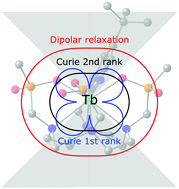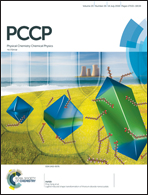Abstract
Lanthanide ions accelerate nuclear spin relaxation by two primary mechanisms: dipolar and Curie. Both are commonly assumed to depend on the length of the lanthanide-nucleus vector, but not on its direction. Here we show experimentally that this is wrong – careful proton relaxation data analysis in a series of isostructural lanthanide complexes (Ln = Tb, Dy, Ho, Er, Tm, Yb) reveals angular dependence in both Curie and dipolar relaxation. The reasons are: (a) that magnetic susceptibility anisotropy can be of the same order of magnitude as the isotropic part (contradicting the unstated assumption in Guéron‘s theory of the Curie relaxation process), and (b) that zero-field splitting can be much stronger than the electron Zeeman interaction (Bloembergen's original theory of the lanthanide-induced dipolar relaxation process makes the opposite assumption). These factors go beyond the well researched cross-correlation effects; they alter the relaxation theory treatment and make strong angular dependencies appear in the nuclear spin relaxation rates. Those dependencies are impossible to ignore – this is now demonstrated both theoretically and experimentally, and suggests that a major revision is needed of the way lanthanide-induced relaxation data are used in structural biology.

- This article is part of the themed collection: 2018 PCCP HOT Articles


 Please wait while we load your content...
Please wait while we load your content...